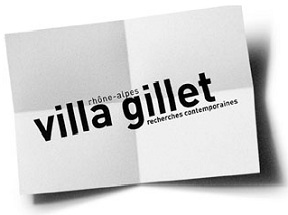Taking History Personnally
Cynthia Carr is the author of three books, most recently Fire in the Belly: The Life and Times of David Wojnarowicz (2012), winner of a Lambda Literary Award for " Gay Memoir/Biography " and finalist for the J. Anthony Lukas Book Prize awarded by Columbia Journalism School and the Nieman Foundation at Harvard University. Her previous books are Our Town: A Heartland Lynching, a Haunted Town, and the Hidden History of White America (2006) and On Edge: Performance at the End of the Twentieth Century (1993). She was awarded a Guggenheim Fellowship in 2007.
Two black men were lynched in Marion, Indiana, on the night of August 7, 1930. That was my father’s hometown, the town where I have my roots, and I heard this story when I was a little girl:
The night it happened someone called my grandfather, whose shift at the Post Office began at three in the morning. "Don’t walk through the courthouse square tonight on your way to work," the caller said. "You might see something you don’t want to see." Apparently that was the punchline, which puzzled me. Something you don’t want to see. Then laughter.
I was in my late twenties — my grandfather long dead — when I first came upon the photo of this lynching in a book. It has become an iconic image of racial injustice in America: two black men in bloody tattered clothing hang from a tree and below them stand the grinning, gloating, proud and pleased white folks. I couldn’t believe that this was my Marion, the lynching referred to by my family, a tree I’d walked past as a child. I looked anxiously for my grandfather’s face. Didn’t find it. That was some relief. But he too had gone to the square that night. There was something you don’t want to see. Then laughter. As I began to tell this story, that was one detail I left out because it shamed me. There was laughter.
I know now that, in the 1920s, Indiana had more Ku Klux Klan members than any other state in the union — from a quarter to a half million members — and my grandfather was one of them. Learning this after he died, I couldn’t reconcile it with the frail Grandpa I’d known. And at that point, I didn’t try.
One of the first people I talked to about this was Robbie McCauley, an African American theater artist whose performances about racism often emphasize the importance of black-white dialogue. This came up when I interviewed her for a piece about her work, and we sat there agreeing that white people tend to have trouble speaking personally on this painful topic. I was all too aware of my untold story. Suddenly, not talking about my grandfather felt hypocritical. So I talked. About the Klan. About the lynching. Robbie’s response surprised me. "Hearing that is a relief," she said. "It makes me feel like I’m not crazy, like I’m not making up something." I told her about searching the infamous photo for my grandfather’s face. She said, "Those are the stories we need to hear that white people aren’t telling." But at the time, 1991, I wasn’t ready to go further.
Two years passed. Then my brother sent me a newspaper clipping related to the Marion lynching, and I learned that a third man had nearly been lynched that night — but he’d survived. James Cameron came so close to dying on the courthouse square that he had rope burns around his neck from the noose. Then the mob let him go — through divine intervention, he believed. He was trying to open a museum in Milwaukee devoted to the history of lynching. To learn that someone had lived through it and never let it go – that was the catalyst for me. I went to meet James Cameron in August, 1993. I was impressed by his dedication, moved by his single-mindedness. He told me that he relived the lynching every day. I knew that I had to acknowledge my connection to that defining moment in his life. Cameron was not shocked. To be in the Klan in the 1920s, he said, was "an upgoing thing."
I knew that my grandfather hadn’t participated in the lynching but I felt he was implicated. Beyond the mob of twenty-five to fifty killers were thousands of witnesses like those in the photograph. (No one in the mob had bothered to wear a mask.) And beyond the witnesses were the white people at home who condoned it. When a Marion grand jury failed to indict anyone, Indiana’s Attorney General stepped in. Two "show trials" took place. No one was guilty. But that meant that every white person in town was guilty. All participated in the code of silence.
I left the encounter with Cameron knowing that I had to write about it. Not that my reluctance just melted away. This was still a hard story to own. The Klan. The lynching. They were not my fault but they were my history. Few of us white people are descended from abolitionists or Freedom Riders. We don’t have legacies that make us proud. But as Robbie observed about the racial impasse: "It won’t be over until you have to live with it the way we have to live with it."
My book Our Town: A Heartland Lynching, A Haunted Town and the Hidden History of White America is my attempt to live with it. Even as I asked myself, Why me? Why my family? I knew that I was being handed an opportunity. I could go to Marion as a journalist and gather the facts. I lived there for over a year and then made repeated trips back. Finding the details of what happened became an obsession with me. It was personal. I felt that I had to know whether the Klan — my grandfather’s Klan — was behind it. I dreaded what I might find. His choices distressed me, yet I felt terrible for him.
I decided to make my grandfather a partner in this work. That is, I would use "my grandfather in the Klan" to open doors with white people who were even more reluctant than me to speak. It would let them know that I wasn’t there to be self-righteous or superior. Because that was the other part of my story. I wasn’t just there as a journalist. I was in it and of it.
Cette ressource a été publiée dans le cadre de la cinquième saison du festival "Walls and Bridges", organisé par la Villa Gillet, qui s'est déroulé à New York du 9 au 18 octobre 2013.
Pour citer cette ressource :
Cynthia Carr, Taking History Personnally, La Clé des Langues [en ligne], Lyon, ENS de LYON/DGESCO (ISSN 2107-7029), décembre 2013. Consulté le 20/10/2025. URL: https://cle.ens-lyon.fr/anglais/litterature/les-dossiers-transversaux/theories-litteraires/taking-history-personnally



 Activer le mode zen
Activer le mode zen![[title-image]1332154748773[/title-image] all rights reserved](https://cle.ens-lyon.fr/anglais/images/carr_1386839161620-jpg)



